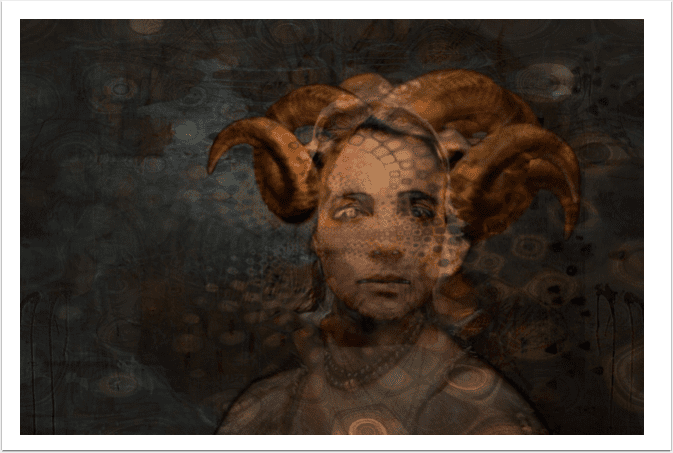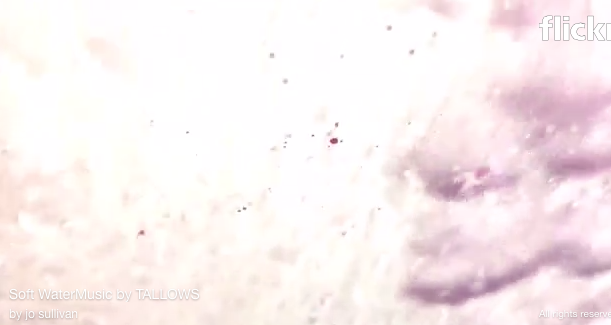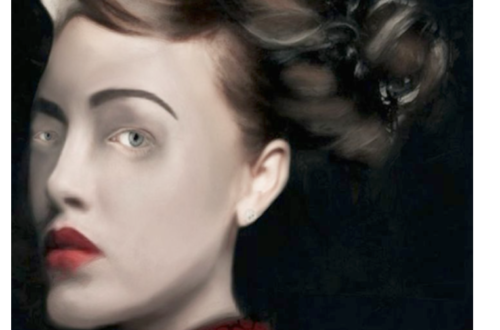Shooting Star – ‘My Consciousness Is Not A Photograph’ – By Star Rush
We’re delighted to publish this very well written article by our Columnist Star Rush for her column with us ‘Shooting Star’, which offers inspiration and guidance in seeing as a photographer sees, for those interested in in exploring creative ways to observe, record, and comment upon the small and large moments of one’s life and those people, things and places around them with a smartphone camera.
In this article Star takes a look at the cognitive effect of mobile photography and explains her thoughts, observations and technique processes. Don’t miss this…(foreword by Joanne Carter).
“My personal photography is about seeing attentively. It is a way to cultivate awareness of my surroundings, a means to observe. I think about how I may record what I observe, which means sooner or later, I’m thinking about a camera or lens. Perhaps I’m wired this way because I engage a similar process when I write. Whether in words or images, I’m trying to record and comment upon my surroundings and the relationship I have to those surroundings.
The smartphone’s ubiquitousness, accessibility, and ease of use, makes it tempting to capture a lot of images, all of the time. It encourages us to abandon discernment of our experiences, to put the recording ahead of the observing. Here’s the thing, though, not everything that passes my eyes or through my consciousness is worth recording in an image or with words. Not all that surrounds me is a photograph. My consciousness is not a photograph; a photograph is artificial. It is a construction of my imagination, and for me to make a photograph that holds meaning, I must be selective in what I choose to move from mere experience of consciousness into a photograph that becomes an artifact, which is separate from me.
One good photograph begins, so often, by choosing NOT to take five, 10, or 20 other photographs. In other words, sometimes it’s better to spend more time observing and thinking and less time shooting. This is a debatable point, and others will say take as many photos of your subject as you can, shooting away since its digital, edit later, delete later, cover your bases. I won’t disagree with what works for others. For me, I find that when I bring a certain level of deliberateness and intentionality to my photography, I more often succeed in capturing something of value. I think through a lot of my choices before I actually press a shutter release.
I don’t tend to find the best angle or frame for a subject through the camera, looking at image files while shooting. That’s editing. I look at my subject directly, without the camera, walk around it. Stare it down. Bend down, rise up on tip toes, and even squint at it. I step closer and walk back. Then, I decide and shoot. Usually, I take one or two shots of the subject before moving on. Sometimes these actions take place very fast, and with practice that happens–a process will be shortened as a result of practice and familiarity. At first, the looking and pre-shooting takes much more time. It also takes a certain kind of comfort in missing a shot, which I also have learned from. I’ve learned, from all the photos I have missed or messed up in focus or framing, that I have it in me the ability to take more than one good photo. I’ve learned resiliency and that it is possible to break from the debilitating grip of perfectionism.
My candid street photography is like this, too. I move a lot, I look around a lot, with my camera at my side. I don’t shoot a lot. I get in the habit of noticing how people are, what’s in the environment around me, what’s coming next. I think that as far as street photographers go, I may be a very slow one. I think, in my head, I fire off a ton of shots–they just don’t make it to my camera roll.
So how to practice seeing attentively? Try the technique of notice and focus, which is something I teach in my writing classes, drawn from the book, Writing Analytically by Rosssenwasser and Jill Stephen. Sometimes try this without a camera to temporarily suspend the urge to shoot everything that crosses your path. Notice and focus can cultivate keen observation of details, and it’s the details that speak in a photograph. First, ask: what’s here or what’s not here? Second, ask: what’s important, surprising, or questionable about what’s here?
First, notice by walking through your neighborhood or down your street looking closely at what surrounds you, opening senses as you do. When you enter a new space, drop the camera to your side and notice your surroundings. Slow down and take your time. Although we’re capturing a visual image, the sounds and smells of a place or actions help us become attuned to where we are and whose company we share. Walk slowly. With just your eyes, pan wide and far, zoom in close. Walk up to objects and touch or smell them. Stop and watch or listen to people. Try doing all of this without looking at your camera for the next shot.
Then, focus on what is distinguishing about a possible subject: shape, size, pattern, texture, expression, gesture, angle, and so forth. Focus requires choosing something from other things and setting it a part somehow. Focus also requires letting other things in your vision recede.
It’s frustrating and also illustrative to notice and focus on details that would make an interesting photograph and in the moment choosing not to take one. In such moments, it can become clear that making a photograph is different from having an experience.
An hour spent practicing a kind of mindfulness of place can help quite a bit when returning with a camera and the intentionality to take photographs. I find I remember those urges to frame an observation, to recognize the potential for imagery within an experience because I become aware that I am making judgements about what I see and experience; I stop being passive.

In “Car Wash,” I tried to record what I found interesting about the details in this corner of an old and abandoned service station in the small town of Raymond, Washington. I like the detail of the old serif type and contrast provided by the absence of any semblance of a car wash on the premises. I liked the detail of horizontal lines across the service station, the horizontal lines of the garage door and the bold line across the object inside the open door, the loosely hanging electrical wires, the vertical lines in the other building, and the way the shadow’s bifurcates the space on the diagonal. I was curious about the relationship between the high window of the building, the truck windshield below, and the open garage door. Each of these seemed related to me, each a frame in some way, and the second strong shadow in the open garage creates another metaphoric “window” or frame, too. Of course, the pick-a-boo presence of the truck in the alley gives me something to look at that brings both sides of the space together, adds an element of curiosity. Lastly, as I liked how deep and contrasty the shadows are on this afternoon and how they create this weight in the front of the scene that’s countered by the bright or light building to the left. That’s a pleasing balance to look at.
I took two photos of this scene: this one and another that is 90 degrees to the front of the service station. This frame is my favorite because of the depth that corner with the truck, window, power lines, adds to the photo frame. There’s a lot of business in the back of the frame that contrasts with the relative quietness up front in the black shadow or white building.
I spotted the typography right off, but I walked around this space for 10 minutes, looking at it from several angles to decide how I wanted to frame what I saw. This is pretty typical of my approach to these kinds of urban or rural landscapes. I try to take my time as much as I can. I also knew from the start that this would be a black and white photograph, because even in the moment as I experienced it, this was a black and white space”.




23 Comments
Elizabeth Collins
I’m moved by what you said about judgment and choice in the act of creating images worth creating. I love that digital photography has made the photographic process more democratic and less expensive. But for the new generation coming of age presently, this ubiquitous access can be so much overkill (& underthought). I plan to have my Humanities 101 community college students read your column this semester. It’s a perfect piece to get them thinking about what is and isn’t artful. Thanks!
Star
whoops. I replied in the wrong space….
Wow, that’s really cool, Elizabeth. Do let me know how the students respond. I teach writing and literature at Cornish College of the Arts here in Seattle, so I am curious about what other students may think. Thanks for your feedback.
Star
Wow, that’s really cool, Elizabeth. Do let me know how the students respond. I teach writing and literature at Cornish College of the Arts here in Seattle, so I am curious about what other students may think. Thanks for your feedback.
Janine Graf
Oh Star, that was a wonderful read! I particularly enjoyed this because I share an almost identical approach to photography. I probably miss / pass up more shots than I take because I want the press of the “shutter button” to be mindful and with purpose; you’d think we were shooting with film! 🙂
Star
Janine, funny you should mention film. I think having grown up with film, and remembering how costly it was, has left an indelible impression. I recall as a child with my first Kodak 35mm receiving a stern talk from my mother about making the 24 roll count, as it was expensive. That stuck with me. Each shot needs to count…doesn’t work for everyone, but it does for me. I do bring that experience to what I do now with digital devices.
Catherine
Excellent Star! I love your words… I too have a similar approach to shooting, but you’ve inspired me to try and be much more mindful. To be more thoughtful. As I read your descriptions of what you liked about the scene, I kept saying “Yes! Exactly…me too!” For me these types of observations fly through my brain in seconds, I snap the shot, and move on. The same when I look at other’s photos. Like the car wash typeface – thinking back it was the first thing that stood out, but I didn’t stop to think what it was exactly – it was just a feeling inside. Then reading your article, I’m all, “Old serif! Right!” 🙂 I wonder if part of that is because I’m not a writer – I suck at it – and I don’t formulate what I see in words/thoughts so much as feelings? Am I making sense? (Even typing this is taking awhile, with lots of re-reading and changing up words so I can hopefully get what I’m feeling across to you.) I love that you take time. And ponder. I’d like to work on that with my photography. And I thank you for this article! (OK, I’m done rambling now…) 🙂
Star
Catherine, I get that “feeling,” too, which tells me just shoot the damn picture! When it comes, I’m thrilled. I’ve thought about this, trying to understand what that feeling is about, and doing a kind of back tracking, from feeling to thoughts, just so I can understand better (for me) what it is I’m doing. Maybe I think too much :). I’m not sure about the role verbal language has in all of this, if any. For me, I’d much rather take a photo than write a line–all of the time. Thanks for reading and sharing your thoughts!
robert bridges
Star, I’m glad to read that you practice mindfulness and slowing down. When you speak in this way I see very little that is different from what I do with a DSLR. Though we tend to find and focus on very different subjects our approach has more in common than not. I like the teaching of “focus and notice,” and when I read that it brought to mind a statement by William James – “that what we pay attention to determines what we experience.”
I need to keep up with the newfangled stuff (iphones) and am heartened to see that the old ways of approaching photography haven’t changed that much regardless if the camera is an 8×10 view or an Apple iphone.
Star
Thank you, Robert, for reading and sharing your thoughts. I do think, as well, that there’s much to share between mobile and dslr (or film) photography–at the end of the day much of it is photography, a visual language, we share. I like that thread that weaves between us. I shoot often with film (more so than a conventional digital camera) and as I wrote to Janine above, I’ve been marked by my youth spent taking film photos…it’s hard to shake, sometimes, those experiences that share us early on. I like your quotation very much–will share with my students, too.
Ayub
Interesting perspective on the subject of photography in terms of the when, why and how. As a person who sees photography as a hobby with a passion to match a pro photographer i tend to use a combination of both mindfulness of my subject and being an opportunist,for street shots mostly ,when the moment calls for it. Like the author mentioned however i do know how the shot will turn out before i actually shot it.
Star
Hello, Ayub
Me, too, regarding knowing what a shot looks like in my head. I shoot a lot of street photography, too, and I find that practice with mindfulness has help me to “read” the scene as it moves, and know how to anticipate a decent frame to capture. I wish you much joy in your photography and thank you for reading and sharing.
Delta
Star,
Thank you. This is a brilliant article and one that deeply resonates with me. I think this sentence:
” For me, I find that when I bring a certain level of deliberateness and intentionality to my photography, I more often succeed in capturing something of value.”
This phrase will travel with me…
Star
Hello, Delta
Thank you for reading and responding. I like that objective, too. It’s good for me to have goals and work toward them, even if I fall short sometimes…I don’t feel quite as aimless in my efforts.
Robin Sweet
Star, thank you! I’ve always enjoyed your thoughtful blog and images. This article strikes on something I’ve been exploring for myself. Too often I shoot away only to be disappointed later that there is no image that strikes me. I’ve been consciously approaching my work with more intention and vision. You’ve given me some tools to play with. xo
Star
Hello, Robin. I’m glad to know you found something that resonates for you. I’ve been there, looking through a string of frames in the camera roll and just feeling deflated to find few that “sparkle” in a way that satisfies. It’s all a process, and we continue…I hope you’re new year is off to a wonderful start.
sylvia devoss
i love that: seeing attentively !
your article is very thought provoking! i remember (way back when) i use to shoot film cameras. unlike digital i had to be very stingy with which shot i would take, which was good training maybe, but i love the freedom to try those car wash shots these days !
thanks for the article !
sylvia
Star
Me, too, Sylvia. Film photography provides a certain kind of training around the frame–maybe its value, in some ways, as being less disposable. I know I was affected by having to save up for film and save up the shots, too. Thank you for reading and sharing your thoughts.
David Schuster
Great words and great image. Thanks
Sean Hayes
Words of wisdom Star. Think more. Shoot less. Post rarely. Intentionality is what makes or breaks an image. A quality that I see embossed in your work and makes your photographs compelling. Well conceived and written article. And timely. The mobile online community is in danger of diluting it’s nascent talents with a ‘shoot, process, post, like’ mentality. There are emerging talents out there that deserve better – you know who you are.
Star
Sean, I like your addition: post rarely. So true. Nothing wrong with selectivity. I think you’re on the mark about the implication of over-production, over-sharing per the risk of dilution. Too much can lead to nothing at all. Thanks for reading and stopping by to leave a comment here.
Maria Sacadura
Excellent article and I totally agree with you: think more and shoot less.
Star
Thank you, Maria, for reading and responding. It’s a goal to work toward–!!
Tracy Mitchell Griggs
Another good exercise is re editing and editing other’s work – There is a collaborations group on FB- people post images for others to edit- it is a great way to stretch the imagination, see another’s point of view and then stretch the boundary of the original image – sometimes completely deconstructing it. It does require “letting go” of the original image – there is a lot of ego naturally involved with image creation – Zen philosophy is useful in many ways – getting out of one’s way first